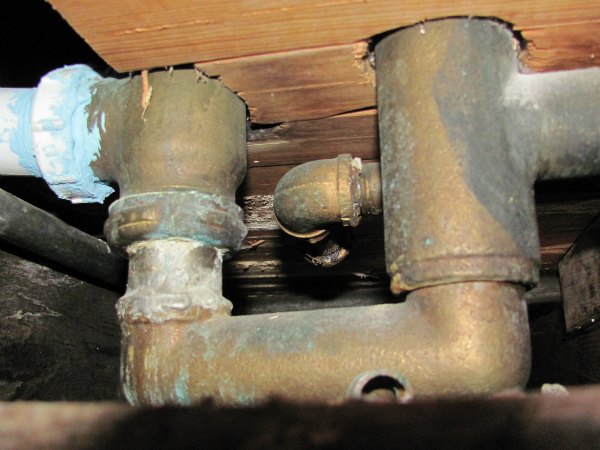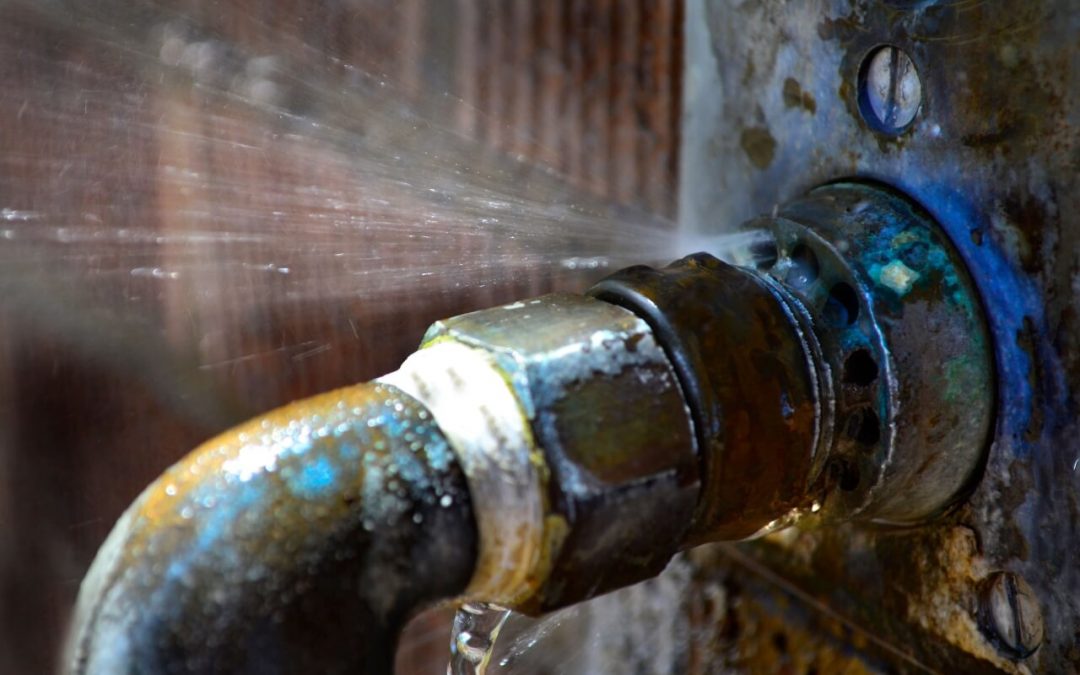Strategic Ways to Manage Plumbing Issues in Older Homes
Strategic Ways to Manage Plumbing Issues in Older Homes
Blog Article
How do you feel about Common Plumbing Problems in Older Homes?

Older homes commonly include charm, personality, and background, however they can likewise bring a host of plumbing concerns. Whether you're taking care of aging pipes, low water pressure, or leakages, understanding how to attend to these common problems is vital to keeping a safe and practical home. In this guide, we'll explore the normal plumbing challenges faced by older homes and offer practical options to keep your pipes in top shape.
Understanding Typical Pipes Issues
Aging Pipelines
One of the most common problems in older homes is aging pipes. Depending on the period in which your home was developed, the pipes might be made from products that have worn away in time, such as galvanized steel, cast iron, or even lead. These products can rust, come to be fragile, or establish leaks, bring about water damage and potential carcinogen.
Low Tide Stress
If you're experiencing low tide stress, it could be because of mineral deposits, corrosion inside the pipes, or old components that are no longer operating successfully. This can be a major trouble, specifically in locations like showers and sinks.
Dripping Pipes
Leakages are an additional frequent concern in older homes, usually brought on by rusty or damaged pipes. Even small leakages can result in considerable water damages, mold growth, and increased water bills otherwise attended to promptly.
Out-of-date Fixtures
Out-of-date pipes components such as faucets, bathrooms, and showerheads not just look old yet may also be less effective, susceptible to leakages, or inappropriate with modern-day plumbing requirements.
Pipeline Rust
Corrosion is an usual problem in older pipelines, specifically those made from galvanized steel or actors iron. Corroded pipelines can restrict water circulation, cause staining, and ultimately cause leakages or pipeline bursts.
Examining the Problem of Your Pipes
Checking Noticeable Pipelines
Beginning by checking any type of noticeable pipelines in your house, such as those in basements, crawl spaces, or under sinks. Search for indications of deterioration, leakages, or corrosion, which can show underlying concerns.
Looking for Leakages
Look for leaks by checking areas around faucets, bathrooms, and under sinks. You can likewise check your water meter prior to and after a period of no water use to detect covert leaks.
Water Top Quality Screening
Older pipelines can influence the quality of your water. Conduct a water high quality examination to look for pollutants such as lead, corrosion, or various other pollutants that might be presented by maturing pipelines.
Solutions for Usual Pipes Issues
Replacing Aging Pipes
If your home has old, degrading pipelines, take into consideration replacing them with modern materials like copper or PEX. This can be a substantial investment, but it will avoid future problems and boost the safety and reliability of your plumbing system.
Dealing With Low Water Pressure
To repair low tide stress, start by cleaning or replacing old components and eliminating mineral buildup in the pipelines. If the problem continues, it may be necessary to change sections of rusty pipes.
Fixing and Replacing Leaking Pipelines
For small leakages, you can use pipeline clamps or epoxy putty as a temporary repair. However, it's best to change leaking pipelines entirely to stay clear of additional damage.
Upgrading Components
Upgrading old components to modern, water-efficient versions can enhance your home's pipes efficiency and minimize water consumption. Seek components with the WaterSense tag for the best effectiveness.
Dealing with Pipe Rust
If your pipelines are worn away, replacing them with corrosion-resistant materials like copper, PVC, or PEX is the most effective service. Normal assessments and water top quality upkeep can aid avoid even more rust.
When to Call a Professional
While some plumbing issues can be handled with DIY options, there are times when it's finest to call a specialist. If you're dealing with major leakages, considerable corrosion, or are unsure regarding the problem of your pipes, a qualified plumber can offer skilled analysis and repair.
Preventive Maintenance Tips
Routine Examinations
Frequently evaluate your plumbing system for indications of deterioration. Capturing concerns early can protect against expensive repair work down the line.
Water Pressure Guideline
Guarantee your water pressure is within the advised variety to avoid worrying your pipelines and fixtures. A plumbing professional can install a pressure regulatory authority if needed.
Water High Quality Upkeep
Mount water filters or softeners if your water high quality is poor. This can shield your pipes and components from damages brought on by hard water or pollutants.
Positive Pipe Substitute
If your home has older pipes, take into consideration aggressive substitute before significant concerns emerge. This can save you from emergency repair services and water damages.
Verdict
Taking care of plumbing issues in older homes calls for a combination of alertness, preventative maintenance, and timely upgrades. By comprehending the typical difficulties and understanding when to seek specialist assistance, you can guarantee your pipes system remains useful and reliable for several years to come.
Common Plumbing Issues in Older Homes and How to Fix Them
Owning an older home in Australia comes with its unique charm and a set of challenges, especially when it comes to plumbing. The Sunshine Coast has many older properties that can harbour plumbing problems that aren t just inconvenient but potentially costly. Here s a look at some common plumbing issues in older homes and expert advice on how to handle them.
Outdated Piping Materials
Many older homes were built with galvanised steel, cast iron, or even lead pipes, materials that are far from ideal by today s standards. Galvanised pipes are prone to corrosion and clogging, while lead pipes pose serious health risks.
How to Fix:
Replacing old pipes is a job for a professional. Upgrading to copper or PVC piping not only enhances water quality and flow but also increases the property s safety and value. If you suspect your home has outdated materials, a licensed plumber can conduct a thorough inspection and recommend the best course of action.
Corrosion and Pipe Degradation
Over time, exposure to water and minerals can cause pipes to corrode, leading to leaks, bursts, and water contamination. Corrosion is especially common in homes over 50 years old.
How to Fix:
Regular inspections can catch early signs of corrosion. If corrosion is found, the affected section of piping often needs to be replaced. For homes with extensive corrosion, a complete plumbing overhaul might be necessary. It s crucial to consult with a plumbing expert to understand the extent of the issue.
Tree Root Intrusion
Older neighbourhoods usually have mature trees whose roots can intrude into pipe lines, causing blockages or damage. This is particularly problematic for sewer lines, where roots seek out water sources.
How to Fix:
A plumber can use a specialised camera to inspect sewer lines for root intrusion. If roots are a problem, methods like root cutting or hydro-jetting can clear the obstruction. In severe cases, part of the pipe may need replacing. Consider root barriers around the piping to prevent future issues.
Inadequate Water Pressure
Low water pressure in older homes can be due to various factors, including corroded water lines, sediment build-up in pipes, or outdated fixtures.
How to Fix:
First, check if the low pressure is isolated to one area or throughout the house. Replacing old fixtures can sometimes resolve the issue. However, if the problem is more widespread, it might be due to sediment or corrosion. Flushing the system or replacing the affected pipes usually restores normal pressure. Again, a professional assessment is advisable.
Outdated Fixtures
Older homes often feature fixtures that are not only visually dated but functionally inefficient. This includes everything from toilets and taps to showerheads and washing machine hoses.
How to Fix:
Updating these fixtures can improve both water efficiency and the aesthetic appeal of your home. Modern fixtures are designed to conserve water, which can significantly reduce your water bill and lessen your environmental impact.
Conclusion
Maintaining the plumbing in an older home requires a proactive approach. Regular checks and updates are key to preserving these beautiful properties. If you re facing plumbing issues in your older home, it s best to call on experienced professionals like Green & Gold Plumbing & Gas. With the right expertise, even the most daunting plumbing problems can be resolved, ensuring that your home s character is maintained while its functionality is enhanced.
https://gandgplumbing.com.au/common-plumbing-issues-in-older-homes-and-how-to-fix-them/

I came across that entry about when doing a search on the search engines. Liked our entry? Please share it. Let somebody else locate it. Many thanks for being here. Revisit us soon.
Click Here Report this page